My
List |
Addition Date
|
Target
|
Mission
|
Instrument
|
Size
|

|
2020-04-15 |
|
Kepler
|
|
3741x2244x3 |
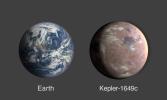
|
-
PIA23774:
-
Comparing the Size of Exoplanet Kepler-1649c and Earth (Illustration)
Full Resolution:
TIFF
(8.766 MB)
JPEG
(479.6 kB)
|

|
2020-04-15 |
|
Kepler
|
|
3840x2160x3 |
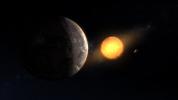
|
-
PIA23690:
-
Kepler Planet 1649c Surface View Artist's Concept
Full Resolution:
TIFF
(7.746 MB)
JPEG
(315.6 kB)
|

|
2020-04-15 |
|
Kepler
|
|
3840x2160x3 |
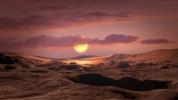
|
-
PIA23689:
-
Kepler Planet 1649c Artist's Illustration From Space
Full Resolution:
TIFF
(15.27 MB)
JPEG
(563.2 kB)
|

|
2019-01-07 |
|
Kepler
Spitzer Space Telescope
|
|
6000x3375x3 |
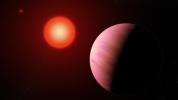
|
-
PIA23004:
-
K2-288Bb (Artist's Illustration)
Full Resolution:
TIFF
(33.47 MB)
JPEG
(1.192 MB)
|

|
2019-01-07 |
|
Kepler
Spitzer Space Telescope
|
|
9019x5068x3 |
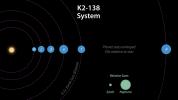
|
-
PIA23003:
-
K2-138 System Diagram
Full Resolution:
TIFF
(5.129 MB)
JPEG
(1.072 MB)
|

|
2019-01-07 |
|
Kepler
Spitzer Space Telescope
|
|
5120x2880x3 |
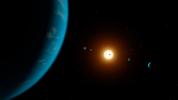
|
-
PIA23002:
-
K2-138 6 Planets Artwork (Artist's Illustration)
Full Resolution:
TIFF
(12.4 MB)
JPEG
(399.2 kB)
|

|
2018-03-26 |
|
Kepler
|
|
1334x701x3 |
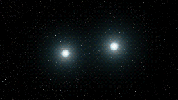
|
-
PIA22353:
-
Kepler Beyond Planets: Finding Exploding Stars (Type Ia Supernova from a White Dwarf Merger)

Full Resolution:
TIFF
(994.5 kB)
JPEG
(59.68 kB)
|

|
2018-03-26 |
|
Kepler
|
|
1339x705x3 |
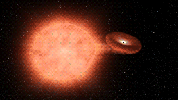
|
-
PIA22352:
-
Kepler Beyond Planets: Finding Exploding Stars (Type Ia Supernova from a White Dwarf Stealing Matter)

Full Resolution:
TIFF
(1.887 MB)
JPEG
(92.24 kB)
|

|
2018-03-26 |
|
Kepler
|
|
1336x710x3 |
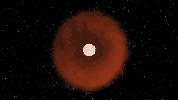
|
-
PIA22351:
-
Kepler Beyond Planets: Finding Exploding Stars (Type Felt Supernova)

Full Resolution:
TIFF
(585.8 kB)
JPEG
(79.56 kB)
|

|
2018-03-26 |
|
Kepler
|
|
1337x706x3 |
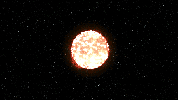
|
-
PIA22350:
-
Kepler Beyond Planets: Finding Exploding Stars (Core Collapse Supernova)

Full Resolution:
TIFF
(586.8 kB)
JPEG
(82.38 kB)
|

|
2018-01-11 |
|
Kepler
|
|
5120x2880x3 |
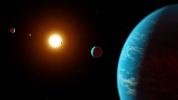
|
-
PIA22088:
-
Kepler K2-138 System (Artist's Concept)
Full Resolution:
TIFF
(18.94 MB)
JPEG
(551.1 kB)
|

|
2017-12-14 |
|
Kepler
|
|
1152x648x3 |
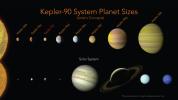
|
-
PIA22193:
-
Kepler-90 System Compared to Our Solar System (Artist's Concept)
Full Resolution:
TIFF
(645.6 kB)
JPEG
(50.32 kB)
|

|
2017-12-14 |
|
Kepler
|
|
8700x2628x3 |

|
-
PIA22192:
-
Kepler-90 system (Artist's Concept)
Full Resolution:
TIFF
(10.73 MB)
JPEG
(573.3 kB)
|

|
2017-04-12 |
|
Kepler
|
|
1280x960x3 |
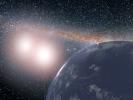
|
-
PIA21470:
-
Water World Artist Concept
Full Resolution:
TIFF
(3.278 MB)
JPEG
(163.5 kB)
|

|
2016-10-21 |
|
Kepler
|
|
4800x2700x3 |
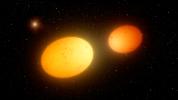
|
-
PIA21075:
-
Heartbeat Stars (Artist's Concept)
Full Resolution:
TIFF
(16.76 MB)
JPEG
(600 kB)
|

|
2016-10-18 |
|
Kepler
|
|
5000x3117x3 |
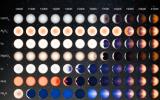
|
-
PIA21074:
-
Clouds on Hot Jupiters (Illustration)
Full Resolution:
TIFF
(31.99 MB)
JPEG
(1.181 MB)
|

|
2016-10-07 |
Comet
|
Kepler
Rosetta
|
|
1786x1030x1 |
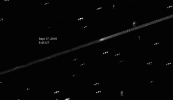
|
-
PIA21072:
-
Comet 67P Seen by Kepler

Full Resolution:
TIFF
(400.4 kB)
JPEG
(46.74 kB)
|

|
2016-06-20 |
|
Kepler
|
|
1260x658x3 |
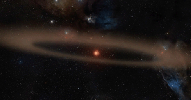
|
-
PIA20692:
-
Young Star and Its Infant Planet (Artist's animation)

Full Resolution:
TIFF
(1.433 MB)
JPEG
(70.08 kB)
|

|
2016-06-20 |
|
Kepler
|
|
4294x2415x3 |

|
-
PIA20691:
-
Comparing K2-33 to our Solar System
Full Resolution:
TIFF
(1.788 MB)
JPEG
(328 kB)
|

|
2016-06-20 |
|
Kepler
|
|
4800x2700x3 |
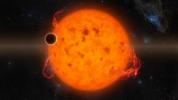
|
-
PIA20690:
-
Exoplanet Orbits Youthful Star (Artist's Concept)
Full Resolution:
TIFF
(27.26 MB)
JPEG
(997.4 kB)
|

|
2016-04-07 |
|
Kepler
|
|
2400x2329x3 |
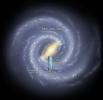
|
-
PIA20070:
-
Map of Exoplanet Search Areas
Full Resolution:
TIFF
(10.39 MB)
JPEG
(264.1 kB)
|

|
2016-03-21 |
|
Kepler
|
|
1920x1080x3 |
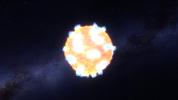
|
-
PIA20065:
-
Caught: A Supernova Shock Breakout (Artist Concept)
Full Resolution:
TIFF
(4.283 MB)
JPEG
(178.6 kB)
|

|
2015-12-10 |
|
Kepler
Spitzer Space Telescope
|
|
4534x2550x3 |
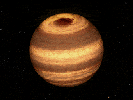
|
-
PIA20055:
-
Cool Star Marked by Long-Lived Storm (Artist's Concept)

Full Resolution:
TIFF
(8.704 MB)
JPEG
(349.2 kB)
|

|
2015-07-23 |
|
Kepler
|
|
4096x2304x3 |
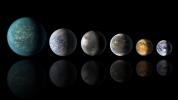
|
-
PIA19830:
-
Pantheon of Planets Similar to Earth (Artist's Concept)
Full Resolution:
TIFF
(28.32 MB)
JPEG
(411.4 kB)
|

|
2015-07-23 |
|
Kepler
|
|
4000x3000x3 |
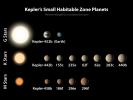
|
-
PIA19827:
-
Kepler's Small Habitable Zone Planets
Full Resolution:
TIFF
(36.01 MB)
JPEG
(382.5 kB)
|

|
2015-07-23 |
|
Kepler
|
|
3400x2400x3 |

|
-
PIA19826:
-
Planetary System Comparisons
Full Resolution:
TIFF
(24.49 MB)
JPEG
(341 kB)
|

|
2015-07-23 |
|
Kepler
|
|
4534x2550x3 |
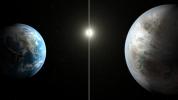
|
-
PIA19825:
-
Earth's Bigger, Older Cousin (Artist's Concept)
Full Resolution:
TIFF
(34.71 MB)
JPEG
(497.3 kB)
|

|
2015-07-23 |
|
Kepler
|
|
4534x2550x3 |
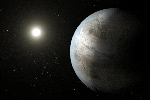
|
-
PIA19824:
-
Soaking up the Rays of a Sun-like Star (Artist's Concept)

Full Resolution:
TIFF
(34.71 MB)
JPEG
(403.9 kB)
|

|
2015-01-28 |
|
Kepler
|
|
1920x1080x3 |
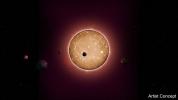
|
-
PIA18910:
-
Kepler-444 Planetary System (Artist Concept)
Full Resolution:
TIFF
(6.223 MB)
JPEG
(144.1 kB)
|

|
2014-12-18 |
|
Kepler
|
|
3000x2400x3 |
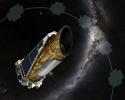
|
-
PIA18904:
-
Reborn Kepler Discovers First K2 Exoplanet (Artist Concept)
Full Resolution:
TIFF
(21.61 MB)
JPEG
(1.297 MB)
|

|
2014-09-24 |
|
Hubble Space Telescope
Kepler
Spitzer Space Telescope
|
|
1893x1125x3 |
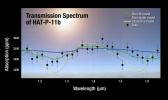
|
-
PIA18839:
-
Transmission Spectrum of HAT-P-11b
Full Resolution:
TIFF
(6.391 MB)
JPEG
(139.1 kB)
|

|
2014-09-24 |
|
Hubble Space Telescope
Kepler
Spitzer Space Telescope
|
|
4200x2400x3 |

|
-
PIA18838:
-
A Sunny Outlook for 'Weather' on Exoplanets (Artist's Concept)
Full Resolution:
TIFF
(30.26 MB)
JPEG
(473.5 kB)
|

|
2014-04-17 |
|
Kepler
|
|
4534x2550x3 |
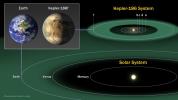
|
-
PIA18000:
-
Kepler-186 and the Solar System
Full Resolution:
TIFF
(34.71 MB)
JPEG
(564.3 kB)
|

|
2014-04-17 |
|
Kepler
|
|
4534x2550x3 |
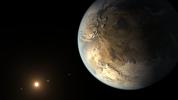
|
-
PIA17999:
-
Kepler-186f, the First Earth-size Planet in the Habitable Zone (Artist's Concept)
Full Resolution:
TIFF
(34.71 MB)
JPEG
(691.4 kB)
|

|
2014-02-27 |
|
Kepler
|
|
1200x860x3 |
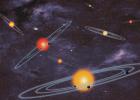
|
-
PIA17848:
-
Star System Bonanza (Illustration)
Full Resolution:
TIFF
(3.097 MB)
JPEG
(156.3 kB)
|

|
2014-02-04 |
|
Kepler
|
|
3000x2400x3 |
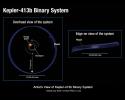
|
-
PIA17836:
-
Wobbly Planet Orbital Schematic (Illustration)
Full Resolution:
TIFF
(21.61 MB)
JPEG
(345.3 kB)
|

|
2013-10-25 |
|
Kepler
|
|
5333x3000x3 |

|
-
PIA17550:
-
A Tale of Two Worlds: Silicate Versus Carbon Planets (Artist Concept)
Full Resolution:
TIFF
(48.02 MB)
JPEG
(793.5 kB)
|

|
2013-09-30 |
|
Kepler
Spitzer Space Telescope
|
Kepler Telescope
Spitzer Space Telescope
|
3840x2160x3 |
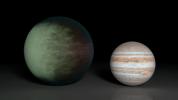
|
-
PIA17445:
-
Partially Cloudy Skies on Kepler-7b (Artist Concept)
Full Resolution:
TIFF
(24.89 MB)
JPEG
(243 kB)
|

|
2013-07-17 |
|
Kepler
|
|
4268x2400x3 |
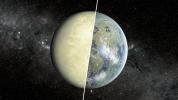
|
-
PIA17250:
-
Toxic Wasteland or Lush Paradise? (Artist Concept)
Full Resolution:
TIFF
(30.75 MB)
JPEG
(1.485 MB)
|

|
2013-04-18 |
|
Kepler
|
|
4268x2400x3 |
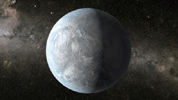
|
-
PIA17004:
-
Kepler-62e (Artist Concept)

Full Resolution:
TIFF
(30.75 MB)
JPEG
(1.774 MB)
|

|
2013-04-18 |
|
Kepler
|
|
4000x2251x3 |
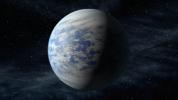
|
-
PIA17003:
-
Super-Venus (Artist Concept)
Full Resolution:
TIFF
(27.02 MB)
JPEG
(525.2 kB)
|

|
2013-04-18 |
|
Kepler
|
|
4268x2400x3 |

|
-
PIA17002:
-
Morning Star (Artist Concept)
Full Resolution:
TIFF
(30.75 MB)
JPEG
(1.245 MB)
|

|
2013-04-18 |
|
Kepler
|
|
4268x2400x3 |
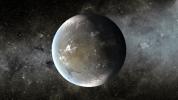
|
-
PIA17001:
-
Kepler-62f, a Small Habitable Zone World (Artist Concept)
Full Resolution:
TIFF
(30.75 MB)
JPEG
(1.432 MB)
|

|
2013-04-18 |
|
Kepler
|
|
3400x2400x3 |
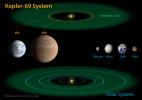
|
-
PIA17000:
-
Kepler-69 and the Solar System
Full Resolution:
TIFF
(24.49 MB)
JPEG
(346.2 kB)
|

|
2013-04-18 |
|
Kepler
|
|
3400x2400x3 |
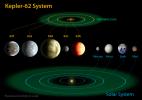
|
-
PIA16889:
-
Kepler-62 and the Solar System
Full Resolution:
TIFF
(24.49 MB)
JPEG
(379 kB)
|

|
2013-04-18 |
|
Kepler
|
|
6112x4680x3 |
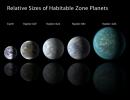
|
-
PIA16888:
-
Lining Kepler Habitable Zone Planets Up
Full Resolution:
TIFF
(85.85 MB)
JPEG
(1.055 MB)
|

|
2013-04-04 |
|
Kepler
|
|
3000x2400x3 |
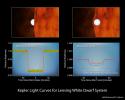
|
-
PIA16886:
-
White Dwarfs: Small and Strong
Full Resolution:
TIFF
(21.61 MB)
JPEG
(404.9 kB)
|

|
2013-04-04 |
|
Kepler
|
|
5120x2880x3 |
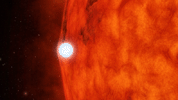
|
-
PIA16885:
-
Dead Star Warps Light of Red Star (Artist's Animation)

Full Resolution:
TIFF
(44.26 MB)
JPEG
(907.2 kB)
|

|
2013-02-20 |
|
Kepler
|
|
3600x1895x3 |
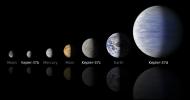
|
-
PIA16694:
-
A Moon-size Line Up (Artist's Concept)
Full Resolution:
TIFF
(20.47 MB)
JPEG
(204.5 kB)
|

|
2013-02-20 |
|
Kepler
|
|
1067x600x3 |
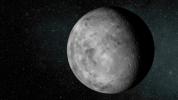
|
-
PIA16693:
-
A Tiny Planet (Artist's Concept)
Full Resolution:
TIFF
(1.922 MB)
JPEG
(101.5 kB)
|

|
2012-05-21 |
|
Kepler
|
|
1500x1200x3 |
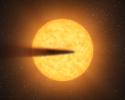
|
-
PIA15629:
-
Possible Disintegrating Planet (Artist's Concept)
Full Resolution:
TIFF
(5.41 MB)
JPEG
(116.9 kB)
|

|
2012-01-11 |
|
Kepler
|
|
3000x2000x3 |
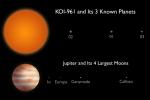
|
-
PIA15259:
-
'Honey I Shrunk the Planetary System' (Artist Concept)
Full Resolution:
TIFF
(18 MB)
JPEG
(175.4 kB)
|

|
2012-01-11 |
|
Kepler
|
|
5400x2400x3 |
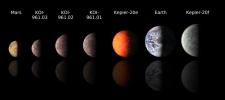
|
-
PIA15258:
-
Sizing Up Exoplanets
Full Resolution:
TIFF
(38.88 MB)
JPEG
(484.3 kB)
|

|
2012-01-11 |
|
Kepler
|
|
4268x2400x3 |
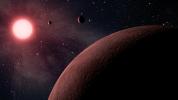
|
-
PIA15257:
-
Mini Planetary System (Artist Concept)
Full Resolution:
TIFF
(30.73 MB)
JPEG
(575.6 kB)
|

|
2011-12-20 |
Kepler-20
|
Kepler
|
|
4264x2400x3 |
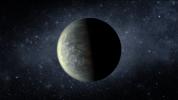
|
-
PIA14889:
-
Kepler-20f -- An Earth-size World (Artist's Concept)
Full Resolution:
TIFF
(30.7 MB)
JPEG
(1.344 MB)
|

|
2011-12-20 |
Kepler-20
|
Kepler
|
|
4264x2400x3 |
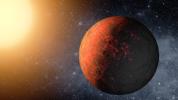
|
-
PIA14888:
-
Kepler-20e -- The Smallest Exoplanet (Artist's Concept)
Full Resolution:
TIFF
(30.7 MB)
JPEG
(1.439 MB)
|

|
2011-12-20 |
Kepler-20
|
Kepler
|
|
1280x720x3 |
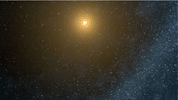
|
-
PIA14887:
-
An Unusual Planetary System (Artist's Concept)

Full Resolution:
TIFF
(2.768 MB)
JPEG
(134.7 kB)
|

|
2011-12-20 |
Kepler-20
|
Kepler
|
|
4200x2700x3 |
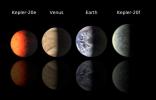
|
-
PIA14886:
-
Earth-class Planets Line Up
Full Resolution:
TIFF
(34.02 MB)
JPEG
(440.2 kB)
|

|
2011-02-02 |
|
Kepler
|
|
3300x2550x3 |

|
-
PIA13833:
-
Kepler-11 Planetary System (Artist Concept)
Full Resolution:
TIFF
(25.25 MB)
JPEG
(229.9 kB)
|

|
2011-01-10 |
|
Kepler
|
|
3600x2026x3 |

|
-
PIA13776:
-
NASA's Kepler Mission Discovers Its First Rocky Planet (Artist Concept)
Full Resolution:
TIFF
(21.88 MB)
JPEG
(547.7 kB)
|

|
2010-08-26 |
NGC 6791
|
Kepler
|
|
3000x2400x3 |
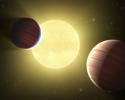
|
-
PIA13351:
-
Worlds on the Edge (Artist's Concept)
Full Resolution:
TIFF
(21.6 MB)
JPEG
(200.1 kB)
|

|
2009-04-16 |
NGC 6791
|
Kepler
|
Photometer
|
2400x1800x3 |
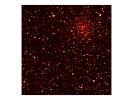
|
-
PIA11986:
-
Cluster of Stars in Kepler's Sight
Full Resolution:
TIFF
(4.327 MB)
JPEG
(387.3 kB)
|

|
2009-04-16 |
NGC 6791
|
Kepler
|
Photometer
|
2400x1800x3 |
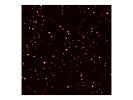
|
-
PIA11985:
-
Host to 'Hot Jupiter'
Full Resolution:
TIFF
(4.327 MB)
JPEG
(185.9 kB)
|

|
2009-04-16 |
NGC 6791
|
Kepler
|
Photometer
|
5876x5876x3 |
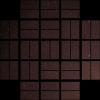
|
-
PIA11984:
-
Kepler's Diamond Mine of Stars
Full Resolution:
TIFF
(103.6 MB)
JPEG
(7.193 MB)
|

|
2009-04-16 |
|
Kepler
|
Photometer
|
2385x2974x3 |

|
-
PIA11983:
-
Where Kepler Sees
Full Resolution:
TIFF
(21.3 MB)
JPEG
(573 kB)
|

 Planetary Data System
Planetary Data System













































































